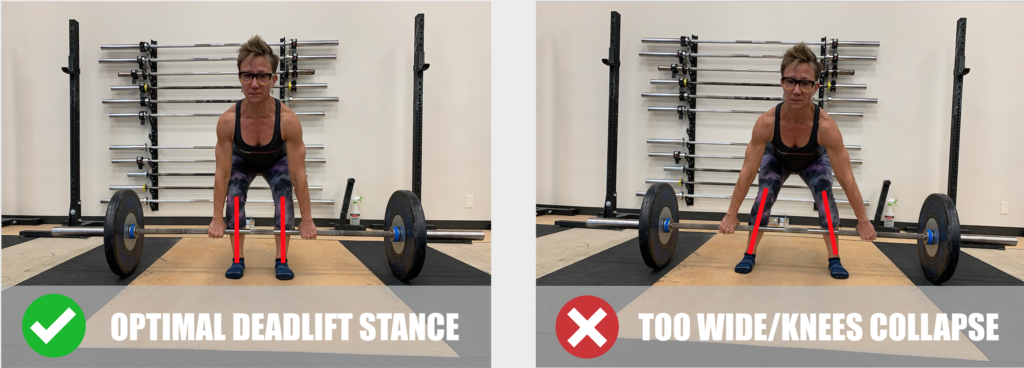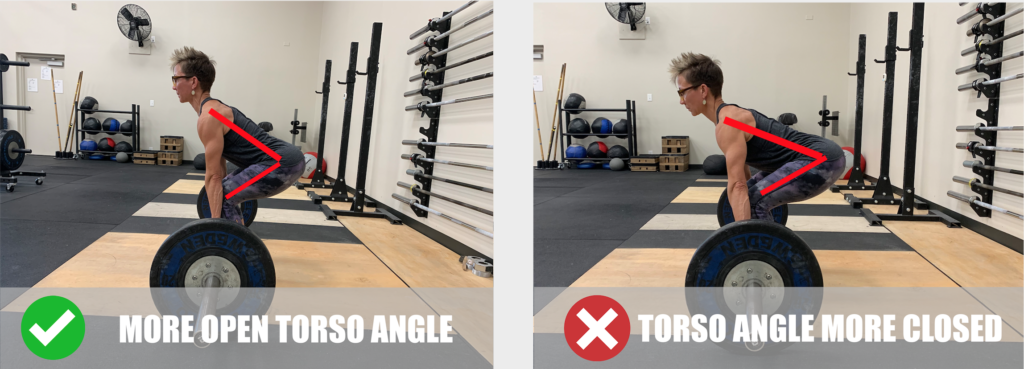A common question when learning how to deadlift is, “Where should my feet be?”. That’s an excellent question. And although the deadlift stance is unique to each individual, there are some general guidelines that apply to everyone.
VERTICAL JUMP
The easiest and most reliable way to determine an ideal stance for conventional deadlift is to simply do a vertical jump and see where your feet land. Do this multiple times.
You’ll probably need to make a few minor adjustments (like turning your toes out slightly), but in general, this is the strongest mechanical position/the ideal stance for a conventional deadlift.
And in case you were wondering, your squat stance should be wider than your deadlift stance.
KNEES
When your deadlift stance is too wide, more often than not your knees will collapse on heavy pulls. And this next part shouldn’t come as a big surprise: this puts a tremendous amount of unnecessary stress on your knee ligaments. And ligaments take forever to heal.

TORSO ANGLE
The wider your stance/grip, the smaller the torso angle. The more closed the angle, the less efficient it is. (That's why quarter squats are so much easier than full squats).
Conventional deadlifts are a hip-dominate movement, so it only makes sense to maximize the power output of the joint doing the majority of the work!

SO WHY DO PEOPLE DO IT?
Sometimes it’s just a lack of information. If you don’t know, you just do what feels most comfortable. Sometimes it’s a result of poor mobility. A wide stance makes it easier to get down to the bar, especially if you’re tall.
HOW TO FIX IT
If you’ve moved your feet in and you’re struggling to get into the start position while maintaining a flat back, elevate the bar. Use blocks or bumper plates to raise the bar as much as needed. Sometimes that means just a few inches, and sometimes it means 12” or more.
Do what it takes to get into the correct starting position, and then over time, slowly work your way back down to the floor.
And when you’re not deadlifting, work on increasing your mobility!


